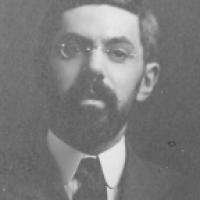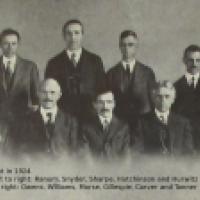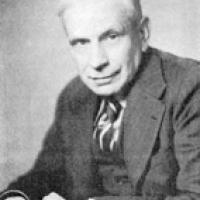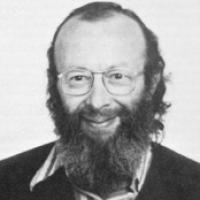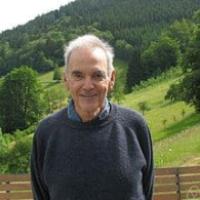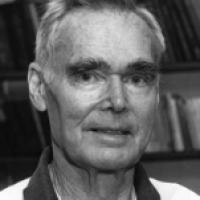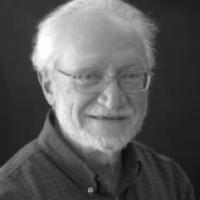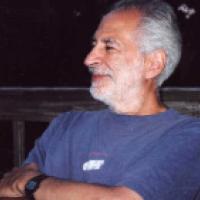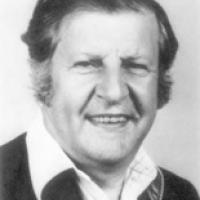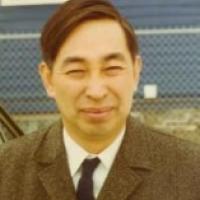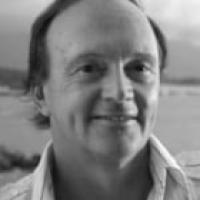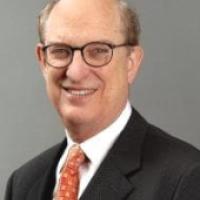This page celebrates mathematics at Cornell by highlighting some of the notable past faculty
At the opening in 1868, the mathematics faculty was composed of one Professor (E.W. Evans) and one Assistant Professor (Z.H. Potter). Over 400 student enrolled at Cornell that year.
Forty years later, in 1908, the department consisted of 4 Professors, 3 Assistant Professors and 4 Instructors. About 4,800 students were enrolled at Cornell. Of these, about 350 were women and about 300 were graduate students.
In 1938, there was 5 Professors, 6 Assistant Professors and 8 Instructors. The student enrollment at Cornell was about 7,000 including 1,400 women and 1,000 graduate students. About 160 women were enrolled as graduate students.
In 1968, the department had grown to include 20 Professors, 7 Associate Professors, 19 Assistant Professors and 3 Instructors. The undergraduate enrollment had reached 10,000. The current undergraduate enrollment is around 14,000.
From the opening of the university in 1868 to 1898
Evan William Evans
The first Chair of the department was educated at Yale and came from Marietta College, Ohio. He was among one of the first professors elected by the board of trustees. His interest in the language of his native country, Wales, led him to pursue studies the Cymric literature and philology, for which he is said to have had no superior in the United States. His teaching of analytic geometry is said to have influenced William Byerly.
William Byerly
In 1873, Byerly received the first mathematics Ph.D. awarded at Harvard and joined the Cornell faculty. He was a student of Benjamin Peirce. At Cornell, he advocated the development of athletic facilities and his departure for Harvard in 1876 was lamented by students. He taught at Harvard for the rest of his career and had a lasting impact on the Harvard curriculum. He was a fellow of the American Academy of Arts and Sciences.
James Edward Oliver
A graduate from Harvard and student of B. Peirce, Oliver had been recommended to A.D. White for the first appointment in mathematics. He was hired 3 years later, in 1871, and became Professor and Chair in 1873-74. He shaped the future of the department by reforming the undergraduate curriculum and promoting research and graduate education. He supervised 5 of the first 6 graduate students who earned a mathematics Ph.D. at Cornell. Three of those were women. He was a fellow of the American Academy of Arts and Sciences and a member of the National Academy of Sciences. He published one of the earliest articles by a Cornell faculty member: "A projective relation among infinitesimal elements", Ann. of Math. 1 (1884).
James McMahon
James McMahon arrived in Ithaca in January 1883. He had been a brilliant student at Trinity College in Dublin and had received a much more sophisticated mathematics education than his Cornell colleagues (he received an MA from Dublin in 1890 and an honorary D.Sc in 1918). He and Oliver were the only faculty performing research during the early years. His first published work was "On a property of an imaginary line passing through one of the circular points at infinity", Ann. of Math. 4 (1888). Later, he wrote on Bessel functions and his last work, Hyperspherical Geometry and its Application to Correlation Theory for N Variables,15 Biometrika, 173–208 (1923), was published posthumously. He served as the American Association for the Advancement of Science’s Secretary (1897), Section A ( and Astronomy); General Secretary (1898), and Vice-President (1901). It is very likely that Arthur Rollin Harris, who received his Cornell Ph.D. in 1888 and became a world expert in tidal theory, was McMahon's student. Harris' work figured preeminently in McMahon's 1902 AAAS address entitled “Some Recent Applications of the Function Theory to Physical Problems”. After Oliver's death in 1895, McMahon played an important role in maintaining research activities in the department.
Ernst Ritter
Ernst Ritter obtained his Ph.D. summa cum laude from Göttingen in 1891 under Felix Klein. He became Klein's assistant and one of his closest collaborators on the subject of function theory (automorphic functions). His work and ideas appear in the book "Vorlesungen über die Theorie der automorphen Functionen" written by R. Fricke and F. Klein (1897) whose 1903 review in the Bulletin of the American Mathematical Society was written by J.I. Hutchinson. In Hermann Weyl's book "Die Idee der Riemanschen Fläche", Ritter is cited for his seminal work on an extended form of the Riemann-Roch theorem. Ritter's acceptance of a position of Assistant Professor at Cornell was announced in a New York Times article published May 20, 1895. Sadly, Ritter never reached Ithaca. He fell ill during his crossing of the Atlantic and died at Ellis Island from a typhus attack on September 23, 1995 at the age of 28. Read more about Ernst Ritter.
From 1898 to 1938
John Irwin Hutchinson
In 1896, Hutchinson received the first Ph.D. awarded at Chicago (an honor he shares with L.E. Dickson) where he had followed his mentor, Oskar Bolza, after starting his graduate studies at the newly founded Clark University. He was a specialist of automorphic functions. His paper On the Roots of the Riemann Zeta Function, Transactions AMS, Vol. 27, 1925, was the object of his talk at the 1924 International Congress of Mathematicians in Toronto. In his work, he found all zeros of the Riemann Zeta function with |Im(z)| ≤ 300, the record at the time (see H.M. Edwards, "Riemann's Zeta Function", pg 126-132). Through her will, Mrs. Hutchinson established the Hutchinson Graduate Fellowship in in 1947. It is awarded annually by the Department of to graduate students who have demonstrated outstanding work as teaching assistants or as students in the graduate program.
Virgil Snyder
Snyder studied algebraic geometry under F. Klein and obtained his Ph.D. at Göttingen in 1895 supported by a Cornell Erastus Brooks fellowship. He returned to Cornell and served the department for 43 years until his retirement in 1938. At Cornell, Snyder supervised over 40 graduate students including a large number of women. He spoke at The International Congress of Mathematicians in 1928, '32 and '36. Three of his students also spoke at the International Congress of Mathematicians between 1924 and 1936. He served as President of the AMS (1928) and was a fellow of the American Academy of Arts and Sciences.
George Abraham Miller
After travelling in Europe and attending the lectures of Sophus Lie in Leipzig and Camille Jordan in Paris, Miller taught at Cornell between 1897 and 1901. He then moved to Stanford and, later to the University of Illinois. In 1900, he received a prize from the Cracow Academy for the determination of all 994 intransitive groups of degree ten. After Professor Oliver’s death in 1895, Miller was the next to advise Ph.D. students and his four Cornell students had very successful academic careers. Miller spoke at the 1924 International Congress of Mathematicians in Toronto. He served as President of the Mathematical Association of America, was a fellow of the American Academy of Arts and Sciences and a member of the National Academy of Sciences.
Louis Lazarus Silverman
Silverman received his Ph.D at The University of Missouri in 1910 after undergraduate studies at Harvard. He was the first to receive a Ph.D. from Missouri. After his Ph.D., he joined Cornell were he stayed until 1918. At Cornell, he collaborated with Hurwitz (a former Missouri undergraduate) on divergent series and summability methods. Their work is featured in the book "Divergent Series" by G.H. Hardy. Silverman later taught at Dartmouth, the University of Texas and the University of Tel Aviv. He spoke at the 1928 International Congress of Mathematicians in Bologna. His son, Raphael Hillyer Silverman, born in Ithaca in 1914, was a viola soloist who played with the Boston Symphony Orchestra and was a founding member of the Juilliard String Quartet.
Wallie Abraham Hurwitz
Supported by a Sheldon Traveling Fellowship from Harvard, Hurwitz earned his Ph.D. at Göttingen under David Hilbert in 1910 and immediately joined the Cornell Faculty. He became Professor Emeritus in 1954 after 44 years of service to the department. A classical analyst, he is best known for his work on divergent series and summability methods. His work is featured in § 3.6 and § 11.1-3 of G.H. Hardy's "Divergent Series". Hurwitz was a prolific graduate student advisor, second only to V. Snyder among Cornell mathematics faculty before World War II in number of students advised. His students include Ralph Agnew who served as Chair of the department from 1940 to 1950 and Robert Cameron, Professor at MIT before joining the University of Minnesota, best known for his work with Ted Martin on the theory of Wiener space.
Harry Vandiver
In 1919, after serving in the military during the war, Vandiver, who was completely self-taught and known for his work on Fermat's Last Theorem, joined Cornell and stayed until 1924. He spoke at the 1924 International Congress of Mathematicians in Toronto. That summer he moved to the University of Austin, Texas. He received the Cole Prize in 1931 and was later elected to the American Academy of Arts and Sciences and to the National Academy of Sciences.
William Lloyd Garrison Williams
After receiving his Ph.D. at Chicago under L.E. Dickson in 1920, Williams accepted a position at Cornell were he stayed until moving to McGill in 1924. He spoke at the 1924 International Congress of Mathematicians in Toronto. At Cornell, he is best known for having attracted and advised Elbert Frank Cox, the first African American to receive a Ph.D - fitting since Williams was named after William Lloyd Garrison, who helped lead the successful Abolitionist campaign against slavery in the United States. Williams is also remembered is his efforts in founding the Canadian Mathematical Society. His daughter, Christine Williams Ayoub, received her Ph.D. at Yale and became the third women to hold an instructor position at Cornell. She is now Professor Emeritus at Penn State.
Harold Calvin Marston Morse
Morse received his Harvard Ph.D. under G.D. Birkhoff in 1917. After serving in the army during the war, he returned to Harvard as a Benjamin Peirce instructor before taking a position at Cornell in 1920. He stayed at Cornell until 1925 when he left for Brown, then Harvard and, finally, the Institute of Advanced Study. At Cornell, Morse advised two graduate students. The first key steps toward Morse theory appear in the article "Relations between the critical points of a real function of n independent variables" which appeared in 1925. Morse served as President of the AMS. He spoke at several International Congress of Mathematicians, twice as plenary speaker. He was elected to the American Academy of Arts and Sciences and to the National Academy of Sciences and received the National Medal for Science, among other honors.
Emil Leon Post
Emil Post received his Ph.D. at Columbia in Mathematical Logic in 1920 after being a brilliant undergraduate at the College of the City of New York. He taught at Cornell for two years (1923-25) but became ill and returned to New York. All his life, he suffered from bipolar disorder. Post is best known for his work on polyadic groups, recursively enumerable sets, and degrees of unsolvability, as well as for his contribution to the unsolvability of problems in combinatorial mathematics.
Charles Frederick Roos
Roos received his Ph.D. at the Rice Institute in 1926 under Griffith C. Evans. He served as Assistant Professor at Cornell between 1928 and 1931. After leaving Cornell, he served as Director of the Cowles Commission for Research in Economics and as director of research, National Recovery Administration, 1933–34. He was one of the founders of the Econometric Society; secretary-treasurer, 1931–32; secretary, 1932–36; vice-president, 1947; and president, 1948.
Saunders Mac Lane
After graduating from Yale, Mac Lane attended graduate school in Chicago before earning his Ph.D. at the University of Göttingen under Paul Bernays and Hermann Weyl. He was an instructor at Cornell during the academic year 1936-37 before pursuing his illustrious career at Harvard and Chicago. Mac Lane served as President of the American Mathematical Society and of the Mathematical Association of America. He was a fellow of the American Academy of Arts and Sciences, a member of the National Academy of Sciences, and was awarded the National Medal of Science. Mac Lane closest and most significant connection to Cornell is perhaps to be the former advisor of Anil Nerode who has been a member of the faculty for over 55 years.
From 1938 to 1958
John Barkley Rosser
Rosser received his Ph.D. at Princeton under A. Church in 1934. He was a National Research Council Fellow at Harvard before accepting a position at Cornell in 1936. He remained at Cornell until 1963 when he moved to the University of Wisconsin to be Director of the Research Center. He worked in such diverse areas as number theory, logic, analysis and applied mathematics. In logic, he is known for his work on the Lambda Calculus and for a stronger version of Gödel incompleteness theorem. He was an invited speaker at the International Congress of Mathematicians in 1954 in Amsterdam. He was a Fellow of the American Academy of Arts and Sciences and served as president of the Society for Industrial and Applied and as president of the Association for Symbolic Logic.
James Wallace Givens
Givens obtained his Ph.D. at Princeton under Oswald Veblen in 1936. He taught at Cornell as an Instructor from 1937 to 1942. Known for pioneering work in computer science, he taught at several institutions including Northwestern University and worked on early computers before serving as director of the Division of Applied at the Argonne National Laboratories. He served as the fourteenth president of the Society for Industrial and Applied .
Mark Kac
Kac studied in Lwow and obtained his Ph.D. in 1937 under H. Steinhauss. He spent the academic year 1938-39 on a fellowship at The John Hopkins University working with A. Wintner and E. van Kampen. During the summer of 1939, he accepted a temporary instructorship at Cornell. He remained at Cornell for 23 years until 1962 when he moved to Rockefeller University in New York. Kac received two Chauvenet Prizes (1950 and 1968) and the Birkhoff Prize in Applied (1978). He was a fellow of the American Academy of Arts and Sciences and a member of the National Academy of Sciences. His Cornell students include Daniel Ray (Professor at MIT) as well as Murray Rosenblatt and Harry Kesten, both members of the National Academy of Sciences.
Leonard Jimmie Savage
Savage received his Ph.D. at the University of Michigan in 1941 under S. B. Myers and R. Wilder and wrote a dissertation on "The Application of Vectorial Methods to the Study of Distance Spaces". After a year the Institute of Advanced Study as a Rackham fellow he became Instructor at Cornell for the academic year 1942-1943 before going to Brown and then Columbia, NYU, Chicago, Michigan and Yale. He is the author of the influential book "The Foundations of Statistics" (1954) and served as president of the Institute of Mathematical Statistics. Of Savage, 1976 Nobel Prize in Economics Milton Friedman wrote: Jimmie is one of the few really creative people I have met in the course of my intellectual life. He has an original, independent mind capable of throwing new light on whatever problems he looks at. He also has a wide-ranging curiosity. In whatever fields he turns his mind to, he gets new insights, ideas, and approaches.... Here is one of those extraordinary people of whom there are only a handful in any university at any time.
William Feller
Feller accepted a position at Cornell in 1945 and stayed until moving to Princeton in 1950. He was a speaker at the International Congress of Mathematicians in 1936 in Oslo and a plenary speaker in 1958 in Edinburgh. While at Cornell, he wrote the first volume of "An Introduction to Probability Theory and its Applications" which was published in 1950. Jacob Wolfowitz ends his review of the book as follows To sum up, this is a superb book, and a delight to read. The gathering together of so much material in so brilliant a manner represents a prodigious amount of labor for which the mathematical public is greatly indebted. The reviewer congratulates the author; he has set a lofty standard for would-be writers of similar books to attain . Feller was a fellow of the American Academy of Arts and Sciences, a member of the National Academy of Sciences and received the National Medal of Science.
From 1958 to 1978
Jacob Wolfowitz
Wolfowitz received his Ph.D. form New York University in 1942 under D. Flanders. He came to Cornell from Columbia in 1951 and stayed until 1970 when he moved to the University of Illinois. He was an invited speaker at the 1970 International Congress of Mathematicians in Nice. He was a fellow of the American Academy of Arts and a member of the National Academy of sciences. The National Academy biographical memoir on Wolfowitz written by Shelemyahu Zacks starts as follows Jacob Wolfowitz, a giant among the founders of modern statistics, will always be remembered for his originality, deep thinking, clear mind, excellence in teaching, and vast contributions to statistical and information sciences.
Jack Kiefer
Kiefer's undergraduate studies at M.I.T. were interrupted by the war. After graduating in 1948, he went to Columbia University where he obtained his Ph.D. under A. Wald and J. Wolfowitz in 1952. By that time, he had already begin teaching at Cornell. He remained on the Cornell Faculty until 1979. He was an invited speaker at the 1970 International Congress of Mathematicians in Nice. He was a fellow of the American Academy of Arts and Sciences and a member of the National Academy of Sciences, only the second faculty after James Oliver to be a member of both academy while being at Cornell. In an obituary, E. L. Lehmann, D. R. Brillinger, and I. M. Singer, give details of his character : Jack Kiefer was a gentle man with a great capacity for love and friendship; this was combined, however, with a fierce and sometimes combative determination to uphold the exacting standards he demanded of others, but especially of himself. He knew more than most about the mushrooms found in Tomkins County.
Walter Feit
After undergraduate studies at Chicago, Feit graduated from the University of Michigan in 1955 under R. Brauer (who had moved to Harvard in 1952). He came to Cornell in 1953 and stayed until 1964 when he accepted a professorship at Yale. The Feit-Thompson Theorem on the solvability of groups of odd order was published in the Pacific Journal of in 1963. Yale memorial statement honoring Feit states Professor Feit's 1963 paper with John G. Thompson, Solvability of Groups of Odd Order, filled an entire issue of the Pacific Journal of and is widely regarded as the most influential paper ever written on finite group theory. It energized the field, providing both inspiration and technical tools for the research that finally culminated in the complete classification of simple finite groups. Feit was a plenary speaker at the International Congress of Mathematicians in Nice in 1970, a fellow of the American Academy of Arts and Sciences and a member of the National Academy of Sciences.
Harold Widom
Widom was one of the winners of the Putnam competition in 1951 while attending City College in New York. He received his Ph.D. at Chicago in 1955 under I. Kaplansky and taught at Cornell from 1955 to 1968 where he started his work on Toeplitz and Wiener-Hopf operators, partly inspired by Mark Kac. His celebrated work with Craig Tracy on random matrices led to the introduction of the Tracy-Widom distribution and has been recognized by the George Polya Prize and the Norbert Wiener Prize in Applied . Widom is Professor Emeritus at the University of California Santa Cruz. He is a Fellow of the American Academy of Arts and Sciences and a fellow of the American Mathematical Society. His brother, Benjamin Widom, is the Goldwin Smith Professor of Chemistry at Cornell.
Gilbert Hunt
Hunt studied at M.I.T. and George Washington University while pursuing an amateur tennis career at the highest level. His graduate studies at Brown were interrupted by the war and he enrolled at Princeton after the war, obtaining his PhD in 1948 under S. Bochner. He joined Cornell in 1949 and stayed until his final departure for Princeton in 1965 after several years of hesitation (he was at Princeton between 1959 and 1962). His works on Random Fourier Series, Markov Processes and Potential Theory, all done when he was at Cornell, are highly regarded and he was an invited speaker at the International Congress of mathematician in 1962 in Stockholm. The impression he left at Cornell and Princeton is captured by the following quote from one of his Princeton Colleague He was very interested in all areas of mathematics, not just his own specialty. He was a Renaissance person, with a deep interest in literature and music as well as many other areas.
William Browder
Browder graduated from M.I.T. in 1954 and received his Ph.D. at Princeton in 1958 under John Coleman Moore. He worked at Cornell between 1958 and 1964 when he moved to Princeton. An algebraic topologist, he is one of the inventor of the area known as surgery theory. He was an invited speaker at the 1966 International Congress of Mathematicians in Moscow and in 1970 in Nice. He is a fellow of the American Academy of Arts and Sciences and a member of the National Academy of Sciences. He served as president of the American Mathematical Society and is Professor Emeritus at Princeton.
Simon Kochen
Kochen received his Ph.D. at Princeton in 1958 under A. Church. He came to Cornell in 1959 and stayed until 1967 when he moved to Princeton. At Cornell, he collaborated with James Ax and proved the Ax-Kochen Theorem for which they received the seventh Frank Nelson Cole Prize in Number Theory. Kochen is the Henry Burchard Fine Professor Emeritus at Princeton University.
Gerald Sacks
Sacks graduated from Cornell in Electrical Engineering in 1958 after serving in the US army 1953-56. He obtained his Cornell Ph.D. in 1961 under J.B. Rosser. Following a year at the Institute for Advanced Study, he joined the Cornell mathematics faculty in 1962 before moving to M.I.T. in 1966. He was an invited speaker at the 1970 International Congress of Mathematicians in Nice. He is known as an outstanding Ph.D. adviser. The Sacks Prize of the Association for Symbolic Logic is awarded annually to the most outstanding dissertation in mathematical logic worldwide. Sacks is Professor Emeritus at M.I.T. and Harvard.
Peter Hilton
During World War II, Hilton, still an undergraduate at Oxford, worked on code breaking at Bletchley Park. He is portrayed in film “THE IMITATION GAME”. He received a D.Phil. from Oxford in 1950 for his thesis, Calculation of the Homotopy Groups of A2n-Polyhedra, and a Ph.D. from Cambridge in 1952. He moved to the United States in 1962 to be Professor of at Cornell University, a post he held until 1971. After several other appointments, he became Distinguished Professor at SUNY Binghamton in 1981. He retired in 2003 and passed away in Binghamton in 2010. A renowned algebraic topologist and outstanding expositor, he wrote 15 books and over 300 articles. He was an invited speaker at the International Congress of Mathematicians in Nice in 1970.
Frank Spitzer
Spitzer received his Ph.D. at the University of Michigan under D. Darling in 1953. After starting his career at the California Institute of technology and the University of Minnesota, Spitzer accepted a Professorship at Cornell in 1961. He remained at Cornell for the rest of his career. He made fundamental contributions to probability theory, including the theory of random walks, fluctuation theory, percolation theory, the Wiener sausage, and especially the theory of interacting particle systems. He spoke at the International Congress of Mathematicians in 1974 in Vancouver. He was a member of the National Academy of Sciences.
James Eells
Eells received his Ph.D. at Harvard in 1954 under Hassler Whitney. He was at Cornell between 1964 and 1969 and left to take a position at Warwick, UK. He spoke at the 1970 International Congress of mathematicians in Nice. Eells' joint work with J. H. Sampson on harmonic maps influenced Richard Hamilton's early work on the Ricci flow.
Simon A. Levin
Levine graduated B.A. from Johns Hopkins in 1961 and received his Ph.D. at the University of Maryland in 1964. He worked at Cornell in between 1965 and 1971 before moving towards ecology and biology. Between 1985 and 1992, he was the Charles A. Alexander Professor of Biological Sciences at Cornell. In 1992 he moved to Princeton where he is Moffett Professor of Biology. He is a fellow of the American Academy of Arts and Sciences and a member of the National Academy of Sciences. He was awarded the Kyoto Prize in 2005.
Kiyoshi Ito
The great Japanese mathematician and probabilist Kiyoshi Ito spent six year at Cornell from 1969 to 1975. He spoke at the 1962 International Congress of Mathematicians in Stockholm. Among many honors and awards, he received the Imperial Prize, the Kyoto Prize for Basic Sciences, the Wolf Prize and Japan's Order of Culture. He was awarded the inaugural Gauss Prize in 2006 for his lifetime achievements. He was a member of the Japan Academy, the National Academy of Sciences (USA) and the Académie des Sciences (France).
Richard Hamilton
Hamilton graduated from Yale in 1963 and obtained his Ph.D. at Princeton in 1966 under R. Gunning. He came to Cornell in 1966. While at Cornell, he introduced the geometric evolution equation known as the Ricci flow. He moved to UC San Diego in 1984. He is Professor at Columbia University. Hamilton was awarded the Leroy P. Steele Prize for a Seminal Contribution to Research in 2009 and the Shaw Prize in 2011. He was a speaker at the International Congress of Mathematicians at Berkeley in 1986 and a plenary speaker in Madrid in 2006. He is a fellow of the American Academy of Arts and Sciences and a member of the National Academy of Sciences.
Lawrence D. Brown
Larry Brown obtained his Ph.D. at Cornell in 1964 under Jack Kiefer. After two years at the University of California, Berkeley, he returned to Cornell in 1966. He was Associate Professor 1966-72 and Full Professor 1978-94. He is now the Miers Busch Professor, Department of Statistics, The Wharton School, at the University of Pennsylvania. He was an invited speaker at the 2002 Beijin International Congress of Mathematicians. He is a Fellow of the American Academy of Sciences and a member of the National Academy of Sciences.



